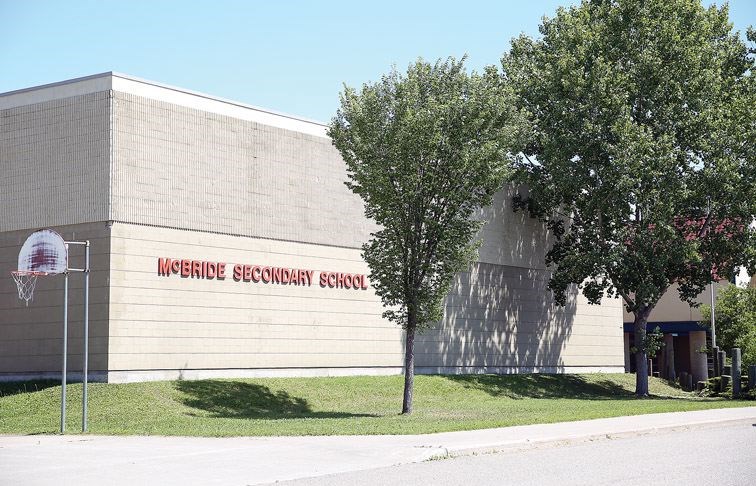The provincial Ministry of Education announced Wednesday it would be changing the electoral makeup of School District 57, effectively establishing a ward system with one representative each for Mackenzie and the Robson Valley.
The district currently functions as an at-large system, with seven representatives elected who represent both the Prince George area and more rural regions such as McBride and Mackenzie. Starting with this fall's municipal elections, voters in Mackenzie and the Robson Valley will now elect one trustee each, while Prince George voters will elect five.
According to an e-mail statement by Rob Fleming, Minister of Education, the changes were made after requests by the District of Mackenzie, the Regional District of Fraser-Fort George and the Village of Valemount.
"Schools in their communities face unique challenges, and allowing for trustees to represent those areas will better address those challenges," Fleming wrote in the statement.
The subject drew pointed criticism on the part of trustees during Tuesday's school board meeting.
"The impact is, the government can send us a letter at anytime, saying we're changing the whole governance situation in the Prince George school district," trustee Tony Cable said during the meeting.
"That is going to make a radical change to the way we operate in this district."
A letter sent by board chair Tim Bennett to Fleming on Feb. 28 said that trustees had voted unanimously to support the current at-large system.
"The District of Mackenzie's proposal will result in a significant over-representation on the Board of Education of students and citizens in the Trustee Electoral Areas proposed for Mackenzie and the Robson Valley and a significant under-representation of the students and citizens in Prince George," Bennett wrote in the letter.
In a phone call after the change was announced, Bennett said the board would accept the decision and would work towards preparing for the changes that would take effect in the fall election.
Prince George schools currently represent 92.3 per cent of student enrolment in the district, while Mackenzie and the Robson Valley together represent 7.2 per cent.
The Prince George area also includes some schools that could be considered rural, such as Hixon elementary and Giscome elementary.
Reached by phone on Wednesday, Mackenzie Mayor Pat Crook said he has been advocating for the introduction of a representative on school board since 2014.
"The representative designated to represent us on the board lives in Fort St. John. She's been here twice in the last three years," Crook said, referring to trustee Brenda Hooker.
Crook said he has heard from residents who often disagree with decisions made by the District.
"This year alone they decided to put the grade seven's into the high school," he said.
"Some people were for it, but the majority of ones that have talked to me about it are against it. They don't want their 12-year daughter hanging around the school when there's 17 or 18-year old boys hanging around."
Crook said Mackenzie's one elementary school is also overcrowded, with a population of over 300 kids.
Mackenzie has seen the closure of two elementary schools since 2008, partly due to an economic downturn and dropping enrolment. Since then, many younger families have returned to the region, Crook said.
He pointed to other school districts in B.C., such as Kamloops-Thompson and Vernon, which have representatives elected for both rural and more urban regions.
The changes come in the midst of a review of provincial government funding to districts, which has been based upon enrolment numbers. A discussion paper released last month suggested this model did not favour rural schools, although no definition was included in the paper of which schools would qualify as rural.



